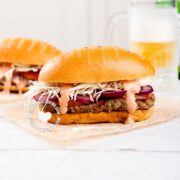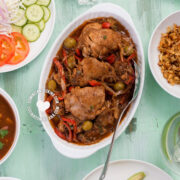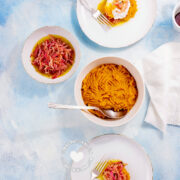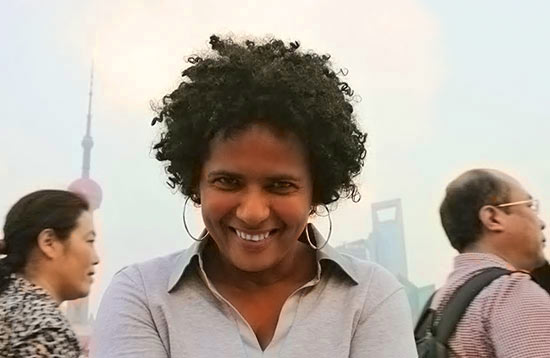
As part of our long-running series My Dominican Food, interviews with interesting people from the arts and culture, and their impressions of Dominican cuisine, Aunt Ilana brings us the words of Dominican artist Iris Perez.
AI - What is your favourite Dominican dish to eat and why?
IP – The combination of rice, guandules guisados (pigeon pea stew) and fish, with a delicious vegetable salad, as well as being delicious, was always what was served on special occasions and feast days at my parental home. I remember this food with great pleasure.
AI - What Dominican dish do you enjoy preparing? Do you have any tips or secrets to share?
IP - The Dominican dish I most enjoy preparing is asopao de camarones. I tend to prefer seafood and vegetables because I don't eat any kind of meat. Asopao de camarones is delicious especially when made with shrimps that have been fished in the Sánchez, Samaná area, which are nice and big and exceptionally tasty. I usually add vegetables, green peas and chickpeas, which I find give it a better taste, and I serve it with fried plantain and avocado. It’s a fantastic combination.
AI - Do you have any particular food-related memories?
IP - I have two memories associated with Dominican food and I’m going to describe them both.
During our visits to my maternal grandparents’ village, I would wake up to the smell of recently roasted coffee, which they then ground with a ‘pilón’ (pestle and mortar) and when it was finely ground it was sieved to make the coffee. My grandmother used to make corn rissoles to go with the coffee or the hot chocolate that was prepared with natural cocoa balls and milk fresh from the cow. It was truly delicious and it brings back pleasant memories of those countryside mornings.
After getting up in the morning, it was time to play with our friends and cousins, and we would plan our usual day out to the river. We usually went to the nearest river to the village, and when we arrived we would make a fire to cook. My female cousins were experts at making a shared meal on those days out. Preparing wheat flour dumplings in between our swims in the river was a veritable ritual. We would all make the dumplings together with sardines or cod and we always ended up sharing them with all the other swimmers who were around that day.
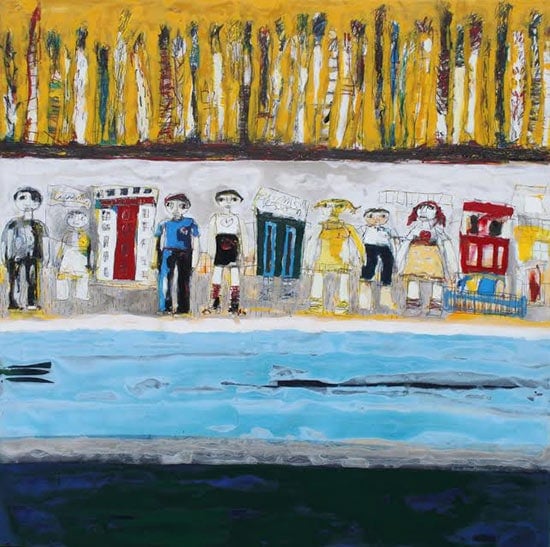
AI - Can you tell me if food has influenced your art in any way?
IP - I don’t think it has influenced it, unless it has and I haven’t noticed, but it’s been part of the process I’ve experienced over the years. Sometimes I’m drawing or painting, and I feel a craving for a specific food and from time to time during the creative process, I go into the kitchen and make myself something. Usually something very light. The more intense the process I am experiencing the lighter the food I eat.
AI - You’ve travelled to several countries for your work – have you got any stories to tell about those experiences, from the gastronomic point of view?
IP - Of course, I've been an artist in residence in several places. In one place especially, PAF in northern France, I spent time with people of different nationalities and it was a ritual for us, after the solitude of our studios, when it was time for the evening meal, we'd all go down to cook something in particular, usually from each of our countries of origin, and this variety of cultures and flavours was served on the tables and the questions started, so the dinner table conversation would go on for hours.
One day I made the mixed salad that is very common here, but not in Europe, and they watched me chopping all those vegetables into tiny pieces, they took a closer look, then the mixture of olive oil, mayonnaise and vinegar, for them this was not so common with vegetables and in the end when the time came to taste them they loved it, and I had to give them the recipe. It was really interesting to show an aspect of what we do in my country, the same happened with me and artists from Holland, Germany and other places who also wanted us to learn about part of their culture through the culinary arts, many of the artists didn't even cook in their own countries, or it was not usual for them. This was such an interesting way of bonding that took place in those meetings in the kitchen at the centre that we all wanted to do it.
Iris Pérez was born in the Dominican Republic. She studied at the Escuela Nacional de Bellas Artes and graduated (Cum Laude) in Fine Art from the Autonomous University of Santo Domingo (UASD). She works as a teacher of art at the Escuela Nacional de Bellas Artes in Santo Domingo.
In 2009 she co-founded the Evolutive Laboratory of Contemporary art with Rosalba Hernández. She has worked as artist in residence and taken part in several international fairs, biennials and projects in Central, North and South America, Europe and China.
She was selected by the ARTIADE organisation to represent the country at the Art Olympics, an event organised alongside the Athens Olympic Games in 2004. Iris has taken part in the Women of the World event since 2000, a travelling exhibition that has visited several museums, galleries and cultural centres all over the world.
She was selected as a member of the jury for the Ford Conservation and Environment prizes in 2005.
In 2012 Iris Pérez was invited for a second time to represent the country in China at the V International Art Biennial in Beijing, at the National Art Museum.
Images provided by Iris Perez


